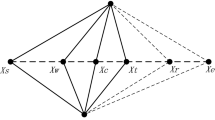Abstract
In this world of overwhelming data, efficient techniques are required to maintain this gigantic bulk of data. One of the renowned methods to serve this purpose is data clustering and hence is the objective of this paper. An algorithm is proposed which imitates the concept of herding, i.e., how dolphins catch their prey. It is an intelligent technique as all the data points are considered for every possible solution, providing clustering and ideal centroids in a short time. This paper presents the working of the algorithm on real datasets and extracts the results. The results of the proposed algorithm are then compared with well-known fuzzy c-means in terms of clusters formed presenting number of data items in each cluster, simplicity and coverage. The later part of the paper presents the association analysis technique on the clusters formed by the proposed approach with final section showing the cross comparisons made with respect to before and after clustering of data and for inter- and intra-clusters.








Similar content being viewed by others
References
Bailey, K.D.: Numerical taxonomy and cluster analysis. In: Typologies and Taxonomies, issue 102. Sage, California (1994)
Tryon, C.R.: Cluster Analysis: Correlation Profile and Orthometric (Factor) Analysis for the Isolation of Unities in Mind and Personality. Edwards Brothers, Ann Arbor (1939)
Jeng, J.-T., Chuang, C.-C., Tseng, C.-C., Juan, C.-C.: Robust interval competitive agglomeration clustering algorithm with outliers. Int. J. Fuzzy Syst. 12(3), 227–236 (2010)
Miyamoto, S.: Different objective functions in fuzzy c-means algorithms and kernel-based clustering. Int. J. Fuzzy Syst. 13(2), 89–97 (2011)
Shieh, H.-L.: A hybrid fuzzy clustering method with a robust validity index. Int. J. Fuzzy Syst. 16(1), 39 (2014)
Streichert, F.: Introduction to evolutionary algorithms. In: Proceedings of Frankfurt Math Finance Workshop, Frankfurt, Hesse, April 2002
Dolphins-world: http://www.dolphins-world.com/how-do-dolphins-catch-their-food/ (2014)
Jain, A.K., Murty, M.N., Flynn, P.J.: Data clustering: a review. ACM Comput. Surv. 31(3), 265–323 (1999)
Chowdary, N.S., Prasanna, D.S., Sudhakar, P.: Evaluating and analyzing clusters in data mining using different algorithms. Int. J. Comput. Sci. Mobile Comput. 3(2), 86–99 (2014)
Deza, E., Deza, M.M.: Encyclopedia of Distances, 2nd edn. Springer, Berlin (2009)
Bache, K., Lichman, M.: UCI Machine Learning Repository. University of California, School of Information and Computer Science, Irvine. http://archive.ics.uci.edu/ml (2013)
Lou, X., Li, J., Liu, H.: Improved fuzzy c-means clustering algorithm based on cluster density. J. Comput. Inf. Syst. 2, 727–737 (2012)
Elena, M.: Fuzzy c-means clustering in Matlab. In: Proceedings of the 7th International Days of Statistics and Economics, Prague, pp. 905–914, September 2013
Kumari, N., Sharma, B., Gaur, D.: Implementation of possibilistic fuzzy c-means clustering algorithm in Matlab. Int. J. Sci. Eng. Res. 3(11), 431–439 (2012)
Huffner, F.: Algorithm Design: Simplicity, GI-Dagstuhl Research Seminar 06362: Algorithm Engineering. Friedrich Schiller University, Jena (2006)
Wiswedel, B., Patterson, D.E., Berthold, M.R.: Interactive exploration of fuzzy clusters. In: Oliveira, J., Pedrycz, W. (eds.) Advances in Fuzzy Clustering and Its Applications, pp. 123–136. Wiley, Hoboken (2007)
Shaikh, S., Rao, M., Mantha, S.S.: A new association rule mining based on frequent item set. Comput. Sci. Inf. Technol. 1, 81–95 (2011)
Han, J., Kamber, M.: Data Mining: Concepts and Techniques, 1st edn. Morgan Kaufmann Publishers, San Francisco (2001)
Thyroid stimulating hormone: http://www.webmd.com/women/thyroid-stimulating-hormone-tsh?page=2
Acknowledgments
This work was supported in part by the Ministry of Science and Technology, Taiwan under Grants MOST103-2221-E-027-076-, MOST103-2221-E-027-122-MY2, and in part by the joint project between the National Taipei University of Technology and Mackay Memorial Hospital under Grants NTUT-MMH-103-01 and NTUT-MMH-104-03.
Author information
Authors and Affiliations
Corresponding author
Rights and permissions
About this article
Cite this article
Huang, CM., Ghafoor, Y., Huang, YP. et al. A Dolphin Herding Inspired Fuzzy Data Clustering Model and Its Applications. Int. J. Fuzzy Syst. 18, 299–311 (2016). https://doi.org/10.1007/s40815-015-0093-5
Received:
Revised:
Accepted:
Published:
Issue Date:
DOI: https://doi.org/10.1007/s40815-015-0093-5




